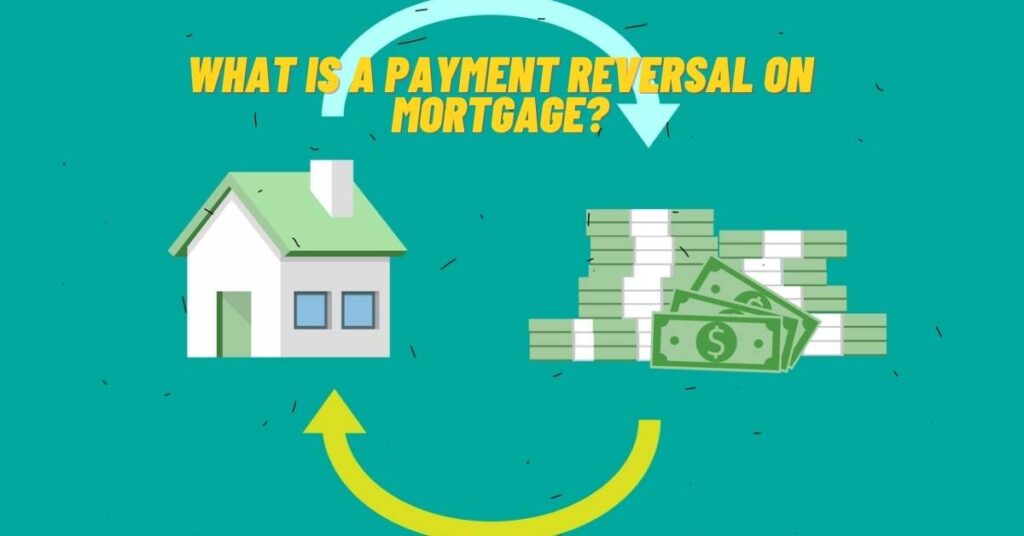A payment reversal on a mortgage happens when a payment was applied against the due balance of a mortgage account but then it had to be reversed. There are many reasons a payment reversal happens on a mortgage. One common reason is bounced checks.
Key Takeaways
- In most case, a payment reversal happens when a merchant reverse a transaction and return the funds
- A payment reversal can be initiated by the cardholder, merchant, card issuing bank, acquiring bank, etc.
- In some case, payment reversal happens because of misplaced payments
- Authorization reversals always happens before the payment officially goes through
- Refund is different from authorization reversals and in a refund a new transaction happens where the merchant pays the cardholder
What is a Payment Reversal?
If you have a mortgage then you might be familiar with the term payment reversal on a mortgage. There are quite a few types of payment reversals available but the mortgage payment reversal is quite different from others. Today I will discuss payment reversal on mortgages, different types of payment reversal, and how to avoid them. Let’s explore!
Usually, a payment reversal happens when a merchant has to reverse a transaction and return the funds to the account from where the payment was made. A payment reversal can be initiated by the cardholder, merchant, card issuing bank, acquiring bank, etc. Some common reasons for a payment reversal are –
- The ordered item is being sold out
- Possibility of a fraud transaction
- The customer has changed his/her mind after placing the order
- The product was not matched the image or product description
- The wrong amount was charged for the order
- There was a duplicate transaction
A payment reversal on a mortgage happens when a payment was applied against the due balance of a mortgage account but then it had to be reversed. There are many reasons a payment reversal happens on a mortgage. One common reason is bounced checks.
If the submitted check is returned by the customer’s bank for non-sufficient funds then a payment reversal will happen. Moreover, if a payment was misplaced to the wrong account then a payment reversal can also happen on a mortgage.
Types of Payment Reversal
There are three types of payment reversals; they are –
- Authorization Reversals
- Refunds
- Chargebacks
1. Authorization Reversals
This is a very common type of payment reversal and this type of reversal always happens before the payment officially goes through. This is the simplest way to fix a payment problem. There are some limitations on the Automated Clearing House (ACH) network therefore; a payment made by a card is usually pre-authorized. So, this is a method where an authorization hold is placed when the cardholder uses the card but the merchant doesn’t receive the fund yet. Moreover, the cardholder won’t able to use the transaction amount. If there is any problem with the payment then you can call the bank to stop the transaction from occurring. When this happens it is known as an authorization reversal. Some key benefits of an authorization reversal are, that it won’t mess up the sales data of a shop, and the customer will get his money back. Moreover, the customer won’t have to pay any fees related to the payment.
2. Refunds
There are many reasons a customer might want a refund. If the customer wants his money back after the payment was completed then it is considered as a refund. If there is any problem with the product or the service then the customer might want a refund. Refund is different from authorization reversals. In a refund, the transaction is completely reversed where a new transaction happens and the merchant pays the cardholder the full amount. While asking for a refund you should keep in mind that you have to pay any fees that come with the refund.
3. Chargebacks
It can happen if a customer calls the bank and files a dispute against the transaction. If the problem between the customer and the seller can’t resolve through the above-mentioned ways then the customer can file a chargeback to enforce a payment reversal. Chargebacks are the worst for a merchant because it has some negative impacts –
- Revenue loss
- Pay extra shipping fees
- Forfeiting sold products
- Pay extra transaction fees
If your shop receives lots of chargebacks then your shop might be flagged by the card network. So, you won’t be able to accept credit cards and your shop’s brand value will decrease.
How to Avoid a Payment Reversal
You can link your authorization request so that a particular request and its information stay with each other to avoid any problems.
You can also use a surface trace audit number for a transaction and all the related communications.
As a business owner, you have to ensure that your payment system delivers retrieval reference numbers for each transaction. This is an excellent way to avoid payment reversal.
Payment reversal is very common for a business and it is not 100% possible to eliminate it. However, there are some ways you can avoid a payment reversal. Let’s check them out below!
In your payment system, you must include an authorization characteristics indicator. It will show an estimated transaction total to your customer.
You should also check the duration field for a payment reversal. Duration is the total number of days when charges will be tabulated. It will help you inform the customer what to accept and when to accept!
Make sure you submit the transaction data as soon as the transaction is completed. This way you will be able to avoid mistakes and payment reversal.
Make sure to use clear billing descriptors on a customer’s statement to avoid any confusion.
You should set up an automated email to the customer once the order is placed or the transaction is completed. So that the customer won’t make a repeat order and then request a refund!
If your business is a rental business and the price changes with time then you should use incremental and estimated authorizations to help the customer find out the actual price while placing an order to avoid any misunderstanding.
If your payment system detects any transaction fault then you should immediately cancel the transaction and don’t wait for the chargeback to occur. Make the reversal an authorization reversal and avoid any debauched consequences.
FAQs about What is a Payment Reversal on Mortgage
Why did I get a payment reversal after making a payment?
There are many reasons you can get a payment reversal after making a payment. One key reason is stock out. If you place an order and complete the transaction but the item is sold out then you will get a payment reversal.
What is the difference between a refund and a reversal?
There is a fine difference between refund and reversal. If the payment amount is deposited into the card holder’s account then it is considered as a refund. On the other hand, if there is no deposit then it is considered as a reversal.
Do you have to pay back a reverse mortgage?
Yes, you have to pay back a reverse mortgage only if you move out of the home or when you die. However, you have to pay the reverse mortgage early if the home is no longer your principal residence.
How long does a reversal payment take?
The answer to this question depends on what type of reversal payment you are talking about. An authorization reversal can be settled within 48 hours from the initiated time. On the other hand, if there is any dispute then it might take from 10 business days to 90 days to resolve the problem.
References:
https://www.investopedia.com/mortgage/reverse-mortgage/
https://www.consumerfinance.gov/ask-cfpb/what-is-a-reverse-mortgage-en-224/
Last Updated on November 5, 2022 by Magalie D.

Magalie D. is a Diploma holder in Public Administration & Management from McGill University of Canada. She shares management tips here in MGTBlog when she has nothing to do and gets some free time after working in a multinational company at Toronto.





